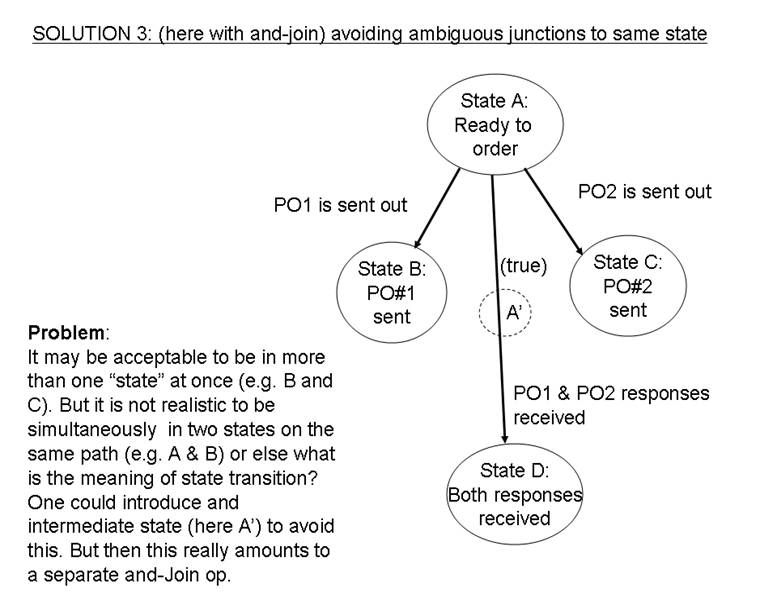About Use Cse 3:
An interesting list of workflow patterns from YAWL: http://is.tm.tue.nl/research/patterns/patterns.htm
See the Flash animated version of each pattern - neat.
LTS transcript: It seems to me that we can't avoid having to
use at least some extra-operators that support the YAWL patterns, e.g. for
synchronization / merging.
In particular look at the "Synchronizing Merge" pattern,
in the Advanced Patterns.
Dale> The “discriminator”
pattern is the OR fork/merge with “lazy” evaluation is the one that
best fits the RFQ use case. It has the difficulty of the “ignore and
reset” that is challenging to implement.
Consider some approach discussed during F2F, for concurrent
paths in the state diagram that result from the "double ordering"
pattern:
Dale> The diagram you enclosed below is
not the LTS state transition
diagram, but the threading diagram that Chuck advanced. Please don’t mix
these up or I will be more confused than usual! For the discriminator the “join”
thread (the thread in the middle) waits until an event occurs and then
transitions, but also ignores other events and “resets”. This
behavior is important when there are loops involved (for example, when a rebid
is sought if none of the quotes are acceptable). I will try to make a LTS style
diagram before our meeting. The sequential diagram you provided is not what the
LTS diagram would look like IMO.
